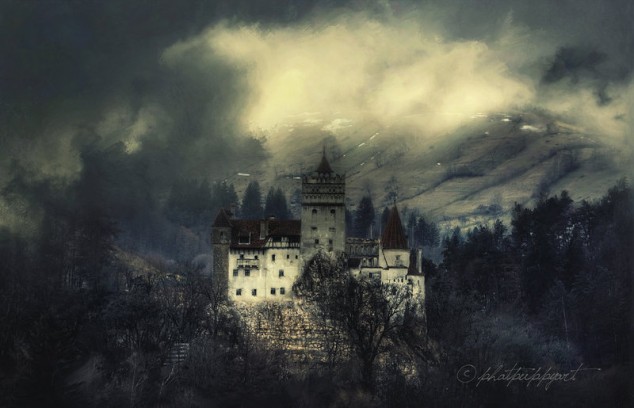 Submitted by Zoltan The Great on
Submitted by Zoltan The Great on

I was born in Romania and grew up with all the scary local legends that are a part of the culture. There have been many cultures that have passed down myths of half-human creatures that cheat death by drinking blood. Aztec mythology told of the civatateo, while the ancient greeks dreaded the lamia. In China, the blood drinker is called jiang-shi, and, people in the remote areas of the Phillipines fear a creature that bears a resemblance to the vampires of western culture - the manananggal. The manananggal not only drinks human blood but also flies on bat wings and is vulnerable to garlic.
According to Prof. Raymond McNally (who has done extensive research on the subject of vampires), "Human fascination with blood goes back to the beginning of recorded time. Primative man saw that when blood went out of the body, the life went out. So, they naturally assumed that by putting blood back in, you could put life back in."
Vampire lore is strongest in the Slavic nations of Eastern Europe, just as Eskimos are reported (erroneously) to have more than 30 names for snow, Slavs and Romanians describe many different forms of the undead creatures that feed on the blood of the living. The appartus of the legend, mostly drawn from this region, has become familiar: the vampire can't be seen in mirrors; shuns garlic; daylight and crucifixes; prefers to sup from the carotid artery; can only be killed by a stake driven through the heart. Less familiar are some other elements of Slavic lore: the vampire can tramsform into smoke, straw or dust as well as a bat: cannot enter a home unless invited; avoids rivers and streams; can be killed by decapitation. As for the bat, its name reflects the legend, rather than the other way around. Blood-eating bats are not indigenous to Europe: they were first discovered in Central and South America by Spanish conquistadors who named them for the mythological vampire.
The Slavic legend first got hearts pumping in Britain and the United States in the form of Dracula, the evil, sleek count dreamed up by British novelist Bram Stoker in his classic 1897 novel. The character was inspired of course by Vlad III, a Romania prince of the 15th century, but in this case, the connection between fiction and fact is highly tenuous.
A fierce warrior, the prince was also known as Vlad Draculea, which translates loosely as "Son of the dragon." The Dragons were an order of Christian Knights who resisted Islamic expansion into Eastern Europe during the 1400s. Vlad's enemies were Hungary and Turkey which were constantly at war with each other and Romania during the 15th century. For the deft political balancing and ferocious military force with which he fended off both these aggressors, as well as founding the capital city of Bucharest, Vlad is still revered as a national hero of Romania.
Even so, the prince was apparently capable of considerable unpleasantness. His habit of driving wooden stakes into the bodily orifices of his captives earned him the memorbale moniker Vlad the impaler. The lone factual point at which the Vlad of history and Stoker's fictional Dracula see to intersect is the Impaler's reputation for enjoying a meal as he watched his victim's die, occasionally dipping his bread into their blood before eating it.
Today, reports of vampire sightings are rare even in rural Romania. But the influence of Stoker's imagination remains pervasive - not only on television, film and fiction but also in the lifestyles of self-styled "sanguinarians" - people who drink blood voluntarily given (or sold) to them by human donors. That remains a story for another day ...
Resource: The Unexplained, pages 130-131
- 1058 reads